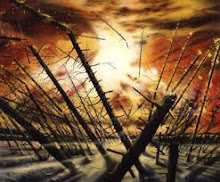Nininger's strategy was to search for meteorites in the Great Plains of the United States, where the land was largely cultivated and the soil contained few rocks. Between the late 1920s and the 1950s, he traveled across the region, educating local people about what meteorites looked like and what to do if they thought they had found one, for example, in the course of clearing a field. The result was the discovery of over 200 new meteorites, mostly stony types.
In the late 1960s, Roosevelt County, New Mexico in the Great Plains was found to be a particularly good place to find meteorites. After the discovery of a few meteorites in 1967, a public awareness campaign resulted in the finding of nearly 100 new specimens in the next few years, with many being by a single person, Mr. Ivan Wilson. In total, nearly 140 meteorites were found in the region since 1967. In the area of the finds, the ground was originally covered by a shallow, loose soil sitting atop a hardpan layer. During the dustbowlera, the loose soil was blown off, leaving any rocks and meteorites that were present stranded on the exposed surface.




No comments:
Post a Comment